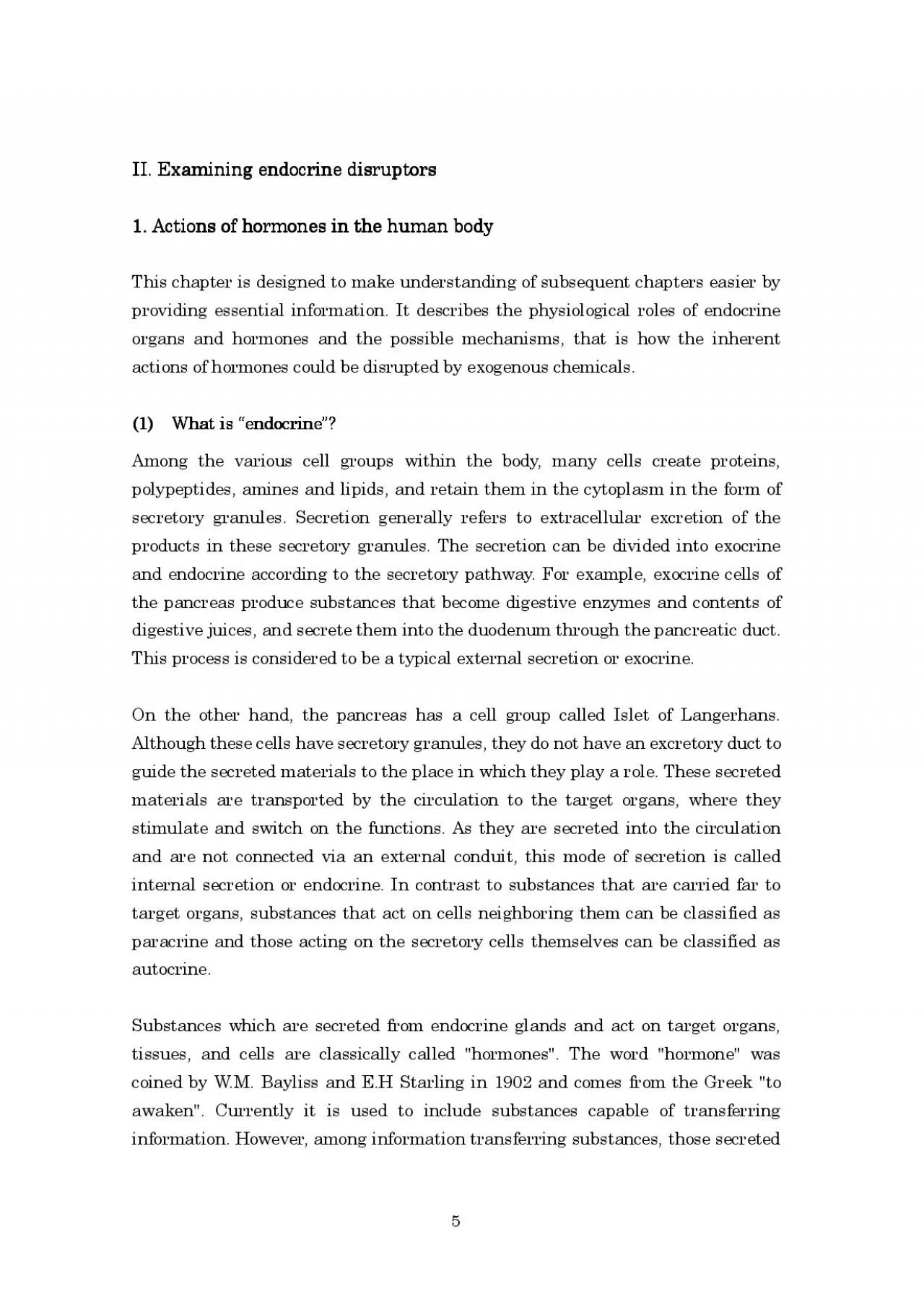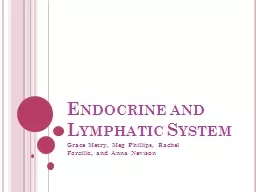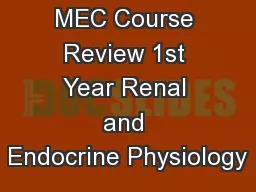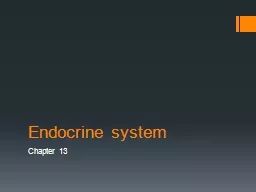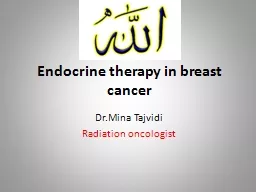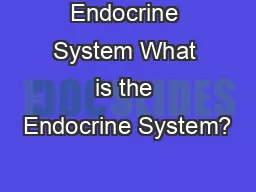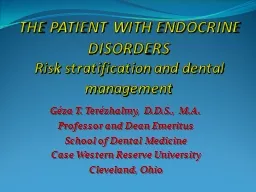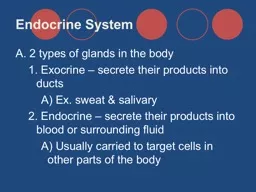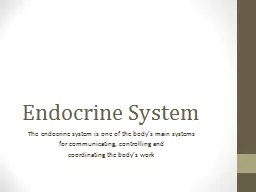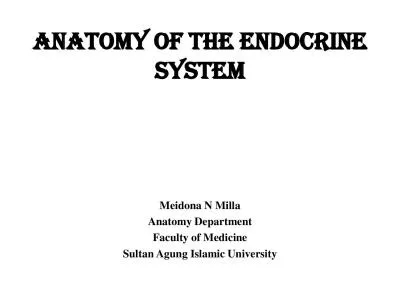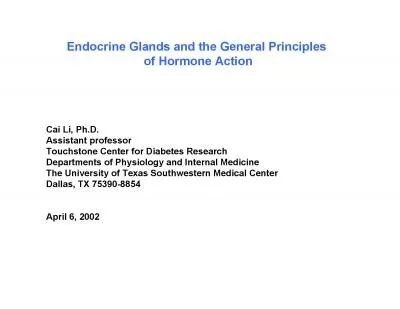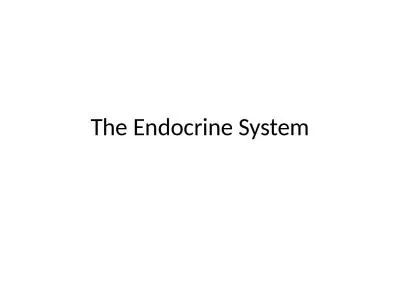PDF-II Examining endocrine disruptorsExamining endocrine disruptorsExamin
Author : ruby | Published Date : 2022-10-11
by cells of the immune system are specifically called cytokines The following arethe classical endocrine organs of humans1 Thyroid glandThyroid gland located in
Presentation Embed Code
Download Presentation
Download Presentation The PPT/PDF document "II Examining endocrine disruptorsExamini..." is the property of its rightful owner. Permission is granted to download and print the materials on this website for personal, non-commercial use only, and to display it on your personal computer provided you do not modify the materials and that you retain all copyright notices contained in the materials. By downloading content from our website, you accept the terms of this agreement.
II Examining endocrine disruptorsExamining endocrine disruptorsExamin: Transcript
Download Rules Of Document
"II Examining endocrine disruptorsExamining endocrine disruptorsExamin"The content belongs to its owner. You may download and print it for personal use, without modification, and keep all copyright notices. By downloading, you agree to these terms.
Related Documents

